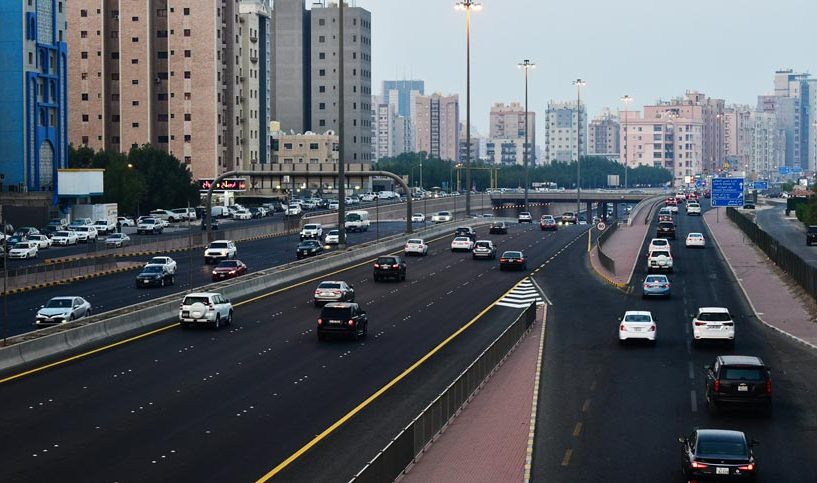Since becoming involved in real estate investing and development, Mohammad Alhusaini’s ears have become magnets to real estate related praises and criticisms. He shares with bazaar that he “tend[s] to hear more of the latter unfortunately.” Isn’t that the Baader-Meinhof phenomenon? Some of the more common things that Alhusaini hears are:
“Rent prices are WAY too high in Kuwait. I can rent in Los Angeles at a fraction of the price and get a much better place to live.” Or “A property in Kuwait costs $1.5 Million compared to a beautiful villa on the mountains in France for a quarter of the price. How has this happened?”
Or our absolute favorite “I can hear my neighbors talk about their marriage every night. These landlords are so cheap.”
If you’ve heard something like this in the past, you’re not alone. And although Alhusaini is no landlord sympathizer, he helps shed light on the situation and what is going on under the veil to help answer some of our questions. Which brings us to his first point:
Myth number 1: Landlords don’t like renting to Kuwaitis. FALSE.
People often assume that landlords do not like to rent out to Kuwaiti’s for various reasons but the reality is that landlords like to get paid for renting out their properties. So why do we see signs that say “Only for non-Kuwaitis” or “Families Only?” And it tends to be apartments that Kuwaitis want to rent that deny them that opportunity. The answer is sad, but simple.
Alhusaini shared a story about a villa owned by his company which he managed. There was a tenant moving out of this villa at the beginning of 2019 and within a few days of being put on the market we had rented it out to a Kuwaiti family who had negotiated the price down 15%.
The family seemed decent so the agreement was made. Unfortunately, the renter then decided that paying rent for a property he lived in was not part of his agenda and so, after paying for exactly one month of rent, the renter stayed an additional 21 months rent-free at the villa.
Most readers will ask the right question: “Why didn’t you kick him out?!” To which Alhusaini found out the hard way: you can’t just kick out a Kuwaiti even if they don’t pay rent. There’s a legal process you have to follow and for this particular individual, that process took 18 months to complete.
That’s right, it took 18 months from the first court case filing of a renter not paying rent until the day that the renter was forcibly removed from the property. If you think that’s crazy, please don’t. This is a common occurrence unfortunately but this was the longest one.
But that begs the question: why is there a difference between Kuwaitis and non-Kuwaitis? The law is applied equally to both, so then are some people waiting to punish non-Kuwaitis more than Kuwaitis? No. It’s simpler than that.
Once a case ruling has been issued and one that states that the defendant must pay back unpaid rents, the ruling comes with some tools used as pressure. One of them is “flight risk” or prevention of travelling. The pressure tactic that separates Kuwaitis from non-Kuwaitis is the prevention of renewal of the residency until the case is settled.
Whereas a Kuwaiti need not renew his/ her residency, a non-Kuwaiti must. This is one of the defining differences in the behavior of the two counterparts. The pressure tactics work with one party and not the other.
And that’s why most landlords are afraid to rent to Kuwaitis. How do you get over it? Make sure to prove your creditworthiness to a landlord. There aren’t many tools to do this well but it’s one thing available to renters who pay via Banani App.
The rent payment score is a thing of beauty and it helps landlords know how well you pay on time which should really aid in getting over this pointless hurdle as many Kuwaitis and non-Kuwaitis are punished by actions of others.
Myth number 2: Landlords commonly build BAD buildings. TRUE.
“I speak from experience when I say that I have built and rented out properties. I’ve seen the entire process from inception to rental and it really gets to me when I hear people talk about landlords building low-quality buildings intentionally.” Alhusaini also adds that he does not believe most of them do it from a cost-saving point of view and here’s why:
“Landlords are business people just like any other business. Their decisions are determined by market forces.” With that being said, he believes this creates tension between what people say they want and what they are actually willing to pay for. Many tenants wonder why landlords have built cheaper buildings, why they have skimped on certain quality aspects and why they keep hiring low-quality contractors to do the work to begin with. The answer is remarkably simple.
Sometimes, landlords may choose to go the extra mile and spend more money when it comes to building their apartment complexes, in hopes of differentiating the building and improving the quality of life for their renters. But sometimes, that runs you into trouble especially if your building is compared to others according to rent and not quality.
What ends up happening is that most people pass on the better-quality units based strictly on the final rent price versus the number of bedrooms. None of the nice switches, doors, layouts, floor-to-ceiling windows, bathrooms and expensive tiles are taken into account.
This in turn leads landlords to reassess and ask themselves whether a larger investment combined with lower overall returns is worth the risk or whether building based on the tried-and-true method is a safer bet.
What’s the solution? As a renter, you have the final choice to vote for what you want the real estate market to give back to you. If you consistently vote on price alone, the market will listen and it will give you back price-based accommodation.
Myth Number 3: Landlords are happy with rent prices today. FALSE.
Landlords are not particularly happy nor unhappy with the high rent prices, but it’s a function of the market. When a developer builds a property, it sits on land and land in Kuwait is extraordinarily expensive.
Over 50% of the cost of building today in Kuwait emerges directly from land prices, which is a burden someone has to bear. The math is simple here too.
Landlords, like all businesspeople, have opportunity costs when it comes to investing. The first option is to invest in a fixed deposit in Kuwait or abroad which will provide a return of about 0.5-2% per year. Stock market returns are averaging out at about 7-8% per year.
Therefore, property investors would like something similar to the 7-8% with the possibility of appreciation which might take the number up to about 9-11%. All that means is that when the return rate is 10%, every year you can expect to make 10,000 KD from a 100,000KD investment and so on.
Back to the prices, then. Landlords who invest do not care really how much is required to invest into a property so much as what the expected return rate is. So, things like building costs, land costs and maintenance costs all need to be factored into the equation. Which leaves us with properties that require higher rents to achieve that 9-11% target return rate. The table below shows you what happens as land prices go down since building costs are typically fixed.
When the cost of construction is relatively fixed, the only real determining factor is the cost of land. The cost of land issue is a complex one so Alhusaini won’t delve further into it here but I expect the table sheds some light on just how big of a role inflated land prices play when it comes to rental prices.
For more information regarding the app, or investment advice head to bananiapp.com or follow them on Instagram @bananiapp for more information. Photo by Latif MansoorAli on Unsplash.








